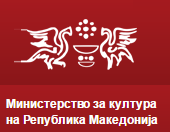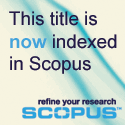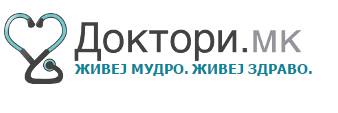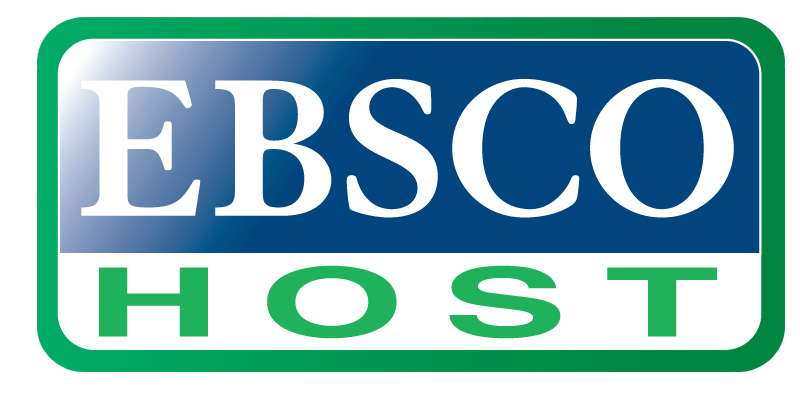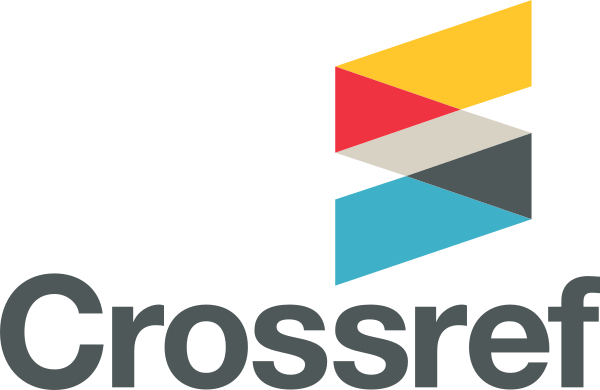JSER Policies
JSER Online
JSER Data
Frequency: quarterly
ISSN: 1409-6099 (Print)
ISSN: 1857-663X (Online)
Authors Info
- Read: 99249
|
БАРИЕРИ-МОМЕНТАЛНА СОСТОЈБА И ПРЕПОРАКИ ЗА НИВНО НАДМИНУВАЊЕ
Бранимир ЈОВАНОВСКИ
Претседател на Федерацијата за спорт на инвалидите на Република Македонија |
|
BARRIERS-CURRENT CONDITIONS AND RECOMMENDATIONS FOR OVERCOMING THEM
Branimir JOVANOVSKI
President of the Federation of Sport of People with Disabilities of the Republic of Macedonia |
|
|
|
|
|
Вовед |
|
Introduction |
|
Со право може да констатираме дека лицата со инвалидност секаде во светот во секојдневниот живот повеќе или помалку се соочуваат со најразличен тип на бариери: архитектонски, социјални, образовни итн. Бариерите во значителна мера го отежнуваат животот на лицата со инвалидност и директно влијаат врз степенот на нивното образование, можноста за вработување, учество во културно-забавни, спортски и други манифестации. Со еден збор кажано тие се лимитирачки фактори кои навлегуваат во сите сегменти од нивниот живот. Во преамбулата на Конвенцијата за правата на лицата со инвалидност донесена од ОН на 13 декември 2007 година е наведено дека „инвалидноста произлегува од интеракцијата на ли цата со оштетувања со бариерите во околината и бариерите кои се одразуваат во ставовите на заедницата, а го отежнуваат полното и ефективното учество на лицата со инвалидност во општеството врз основа на еднаквост со другите членови на општеството.“ Архитектонските бариери се најлимитирачки за лицата со телесна инвалидност. Употребата на јазикот на знаците во недоволна мера ги чини нерамноправни со останатата популација лицата со оштетување на слухот. Следењето на наставата, комуникацијата со светот и пристапот кон интернетот се најчести бариери со кои се соочуваат лицата со оштетување на видот. За решавање на проблемот на архитектонските бариери потребно е инвалидските организации да го насочат своето делување до сите јавни институции, училишта, факултети, банки, стадиони, кина и театри, но и непосредната околина што нè опкружува да ја прилагодат и направат пристапна за сите граѓани. Честопати пристапноста се изедначува со изградба на рампи за корисници на инвалидски колички. Навистина изградбата на рампите е многу важна, но мора да се подвлече дека тие не се доволни за зградата да биде пристапна. Внатрешноста на зградата мора да се опреми со пристапни тоалети, лифтови, држачи за рацете, аудио и видео сигнализација за лицата со оштетен вид и/или слух. Значи пристапот на влезот на зградата е само првиот чекор кон потполно пристапен простор. Кога сме веќе тука, да го разоткриеме митот дека пристапноста чини поскапо. Вообичаена заблуда е дека елементите кои нештата ги чинат пристапни, чинат значително поскапо. Проценката вели дека кога веќе во планирањето на новите згради се почитуваат стандардите за пристапност, дополнителните трошоци можат да чинат вкупно 1% од вкупните трошоци за целата зграда (според студијата работена во Швајцарија). Дури и адаптациите на постоечките згради честопати се преценети. Споредтена во САД, од 436 адаптации кои ги извршила една компанија, 69% не чинеле ништо, 28% чинеле помалку од 1.000 долари и само 3% чинеле повеќе од 1.000 долари. Со оглед на улогата која ја имаат и целта која ја постигнуваат овие додатни трошоци се исклучително ниски. Ова мора да го имаат предвид инвеститорите кои штедејќи ги парите не ги почитуваат стандардите на пристапноста. Сепак, значително поефтино е доколку зградата се направи пристапна уште во процесот на планирање, отколку низ адаптација кога градбата е веќе завршена.Освен тоа често се потценува користа која пристапноста може да ја донесе - како што е на пример зголемување на бројот на клиентите со инвалидитет. На пример, Барцелона е град кој доживеа драматичен развој на туризмот откако градот за време на одржување на олимписките и параолимписките игри беше направен пристапен. Во Барцелона се пристапни повеќето од јавните установи и простории и 85% од автобусите. Пред да биде адаптиран градот во 1990 година бројот на ноќевањата во хотелите изнесувал 1.732.902, а откако градот ги имплементираше потребните стандарди за пристапност, во 2003 година бројот на ноќевања пораснал на 3.848.187. Во Член 9 од Конвенцијата се вели: За да им се овозможи на лицата со инвалидност да живеат самостојно и во целост да учествуваат во сите аспекти од животот, државите потписнички ќе преземат соодветни мерки да им обезбедат пристап на лицата со инвалидност, врз основа на еднаквост со другите, до изграденото опкружување, превозот, информациите и комуникациите, вклучувајќи ги технологиите и системите за информации и комуникации, како и до други капацитети и сервиси наменети за јавноста, во урбаните и руралните средини. Меѓутоа, во практиката, често сме сведоци на изградба и планирање на посебни патеки за движење на пешаци, на велосипедисти, но и покрај постојаните укажувања сè уште ниту еден градоначалник во Република Македонија не пристапил кон адаптација на тротоари за безбедно и самостојно движење на слепите лица или да постават на сите крстосници звучни или говорни семафори (во Скопје засега ги има само два). Едниот на крстосницата кај Соборниот храм „Св. Климент Охридски“ и вториот кај Државното училиште за рехабилитација на деца и младинци со оштетен вид „Димитар Влахов“), како што е тоа нормална појава во сите други европски метрополи. Посебните обележени плочки се поставуваат по средината на тротоарот и го наведуваат слепото лице на означените пешачки премини избегнувајќи ја непосакуваната средба со многубројните бариери (фиксирани или подвижни). Тротоарите се полни со бариери за движење на лицата со оштетен вид како што се: непрописнопаркирани автомобили, сообраќајни знаци чии носечки столбови често се поставени во линија на движењето, а многу од нив имаат и ниско поставени табли во висина на главата, лошо поставени жардиниери, билборди, челични столпчиња и бетонски топки, дрвореди што се наоѓаат на средината на пешачката патека, телефонски говорници и поштенски сандачиња што стрчат на фасадите во висина на рамето, голем број трафики, автомати и фрижидери за пијалаци и сладолед, улични продавачи на цвеќе, овошје, зеленчук и што уште не од широкиот спектар на пречки со кои се среќаваат слепите лица. Архитектонските бариери се само почетокот на проблемите. Следењето на наставата, комуникацијата со светот и пристапот кон интернет се исто така важен сегмент од општото живеење. Додека за лицата со телесна инвалидност, архитектонските бариери се во најголема мера пречки во образованието и им претставуваат тешкотии за пристап до објектите во кои се изведува наставата, на лицата со оштетен слух, вид и на интелектуално попречените лица им се неопходни други помагала за редовно следење на наставниот процес. За да може да се спроведе успешно образование на глувите лица, треба да се признае правото на употреба на знаковниот јазик во сите степени на образование на глувите лица. Затоа е потребно од страна на државата да се признае знаковниот јазик, како посебен јазик кој го зборува една малцинска група. Правата на употреба на знаковниот јазик е утврдена со Конвенцијата на ООН и многу други меѓународни документи донесени од страна на Советот на Европа (како на пример: Резолуцијата од Парламентарното собрание под бр.1.598 (2003) „Заштита на јазикот на знаци во државите членки на Советот на Европа“. Но, во еднаква мера потребна е и: рана детекција на слушните оштетувања со спроведување на неонаталната аудиометрија, избор на соодветна комуникациска опција за децата со оштетен слух, примена на соодветна амплификација и кохлеарна имплантација до 12-тиот месец, како претпоставка за инклузивно образование, иновирање на наставниот план и програми, модернизација и индивидуализација на пристапот во наставниот процес, зголемување на изборот на професии за учениците со оштетен слух, обезбедување на вертикалната проодност од средното кон високото образование итн. За децата со интелектуална попреченост е потребно обезбедување на образование согласно нивните можности и способности, како основа за нивна успешна интеграција во сите области на животот преку изработка на индивидуални образовни програми со поддршка од страна на дефектолог и други специјализирани стручни лица заради континуирана стручна помош во соработка со нивните родители, потоа обезбедување на професионално работно ориентирање и оспособување во основните училишта, книги и други пишани материјали во лесно читливи верзии. Во Република Македонија образованието на слепите лица се одвива во државнотоучилиште за рехабилитација на деца имладинци со оштетен вид „Димитар Влахов“во Скопје каде се образуваат триесетинаслепи деца. Меѓутоа мал е изборот назанимања кои им се на избор. Нивнатаедукација најчесто е од занимањата: телефонисти, картонажери, книгоповрзувачии во поново време масери. Но, примерите во Европа и во светот говорат дека слепите бидат корисни како: преведувачи, раководители, правници, новинари, академски музичари, програмери, уметници итн. лица можат да се оспособуваат и да |
|
We can obviously conclude that people with disabilities worldwide in their everyday life, more or less face various kinds of barriers: architectural, social, educational etc. Barriers make life of people with disabilities difficult and directly influence on the level of their education, possibilities for employment, participation in cultural-entertaining, sport and other events. Thus, they are limiting factors that enter all segments of their life. The Preamble to the Convention on the rights of people with disabilities adopted by UN on 13 December 2006 states that “disability comes out of the interaction of people with disabilities with the barriers in the environment and the barriers that are reflected in the community attitudes. That hinders the complete and efficient participation of people with disabilities in the society on the basis of equality with other members of the society.” The architectural barriers are the most limiting for people with physical disabilities. The use of the sign language in some way makes people with impaired hearing unequal with other people, while lectures, the communication with the world and the access to the Internet are the barriers that people with impaired vision face with. The solution of the problems with architectural barriers is that the Associations of the disabled people have to act and insist on adapting and making accesses to public institutions, schools, faculties, banks, stadiums, cinemas and theatres, and the living environment. The approach is frequently equalized with building entrance/exit ramps for wheelchairs. Building entrance/exit ramps for wheelchairs are very important, but it has to be pointed out that does not make the entire building accessible. The facilities inside the buildings have to provide access to toilets, lifts, hooks, audio and visual signalization for the people with impaired vision and/or hearing. Thus, the accessible entrance is just the first step to the complete accessibility to the premises. Let us reveal the myth that the accessibility costs more. It is usually mistaken that the elements which make objects accessible are much more expensive. The estimation shows that if the standards for accessibility are respected while planning new buildings, the additional expense will be only 1% of the total expenses for the whole building (according to a study worked out in Switzerland). Even the adaptations of the existing buildings are often overrated. According to a study worked out in USA, out of 436 adaptations done by a certain company, 69% cost nothing, 28% cost less than $1,000, and only 3% cost more than $1,000. Having in mind the role and the aim these additional expenses have, we find the extra expenses extremely low. Thus, by saving money the investors do not respect standards of accessibility. It is certainly less expensive if the access to the premises has been planned in advance than to have the adaptation done afterwards. Furthermore, the fact that has been underestimated is the benefit which the accessibility may bring such as the in- crease of clients with disabilities. For example, Barcelona is a city that has experienced tourist blooming since the Olympic and Paralympics games, when the city was made accessible. Most of the public institutions and premises in Barcelona are accessible and 85% of the buses. Before the adaptation of the city in 1990 the number of the overnight accommodations at hotels had been 1,732,902, and after the implementation of the necessary standards of accessibility, the number of the overnight accommodations increased to 3,848,187 in 2003. The Article 9 of the Convention states: In order to enable people with disabilities to live independently and on the whole to participate in all aspects of life, the signatory states will undertake appropriate measures to provide access of people with disabilities, on the basis of equality with others, to built environment, transport, information and communications, including information and communication technologies and systems, as well as to other facilities and services intended for the public, both in urban and rural environments. However, in practice, we witness the planning and building of special paths for pedestrians and bicyclists, but no Mayer in the Republic of Macedonia has done anything to adapt the pavements for safe and independent mobility of blind people or put high-sounding traffic lights at crossroads (there are only two of the kind in Skopje-one at the crossroad near the cathedral church “St. Kliment Ohridski” and the second one near the state school for rehabilitation of children and youth with impaired vision “Dimitar Vlahov”), which is a normal matter in other European metropolis. Specially marked tiles placed on the pavements direct blind people towards pedestrian crossings and help them to avoid numerous barriers (fixed or mobile). Pavements are full of barriers for save moving of people with impaired vision such as cars parked contrary to regulations, traffic sign poles often put on the line for moving, with boards put almost at the height of the head, badly placed flowerpots, advertising boards, steel poles and concrete balls, tree lined paths, public call boxes and mail boxes placed on facades at the height of the shoulder, a lot of tobacco shops, automatic devices and beverage and ice-cream fridges, flower street market, fruit and vegetable street market, and a range of other barriers blind people meet in the streets. The architectural barriers are just the beginning of the problems. Participating at lectures, communication with the world and the access to the Internet are very important segments of common living. If the architectural barriers and the access to premises where lectures take place are obstacles in education for people with physical disabilities, people with impaired hearing, impaired vision and people with intellectual disabilities, they also need other aids to participate actively in the education process. In order to carry out successful education for deaf people it is necessary for their right to the sign language to be recognized, at all levels of education. Therefore, the state has to recognize the sign language as a special language used by a minority group since the use of the sign language is regulated by the Convention of UN and various international documents adopted by the Council of Europe (for e.g. the Resolution of the Parliamentary Assembly No. 1,595 (2003) “Protection of the sign language provided by member states of the Council of Europe”. But equally important are the early detection of the hearing impairments through carrying out neonatal audiometry, choosing appropriate communication option for children with impaired hearing, applying appropriate amplification and cochlear implantation up to the 12 month of age as an assumption for inclusive education, innovation of the curricula, updating and individualizing the approach in the educational process, enhancing the choice of vocations for students with impaired hearing, providing vertical transfer from secondary to higher education etc. It is necessary, for children with intellectual disabilities, to provide education according to their possibilities and abilities, as a basis for their successful integration in all spheres of life. Thus, individual educational programmes have to be created specially for them with the support of the special educators and other specialized professional people in order to provide continuing professional assistance in cooperation with their parents. Furthermore, professional job orientation and work training, as well as simplified books and other written materials have to be provided. In the Republic of Macedonia the education of blind people is carried out in the state school for rehabilitation of children and youth with impaired vision “Dimitar Vlahov”in Skopje. There are about 30 students in that school, but there are only a few vocational options. But there are blind students who attend regular primary and secondary schools, as well as faculties in the country and abroad. They usually choose the following vocations: telephone operators, workers in cardboard factories, bookbinders and recently masseurs. But experience from Europe and worldwide shows that blind people can be successful interpreters, managers, lawyers, journalists, academic musicians, programmers, artists etc. Computers are unavoidable aids in education, professional training and employment of blind people. The Republic of Macedonia is the only country in the region without a library for blind people as a public institution and a part of the library system in Macedonia. Therefore, the Association of Blind People of Macedonia has a crucial role in informing the blind, producing Braille written materials as well as sound materials, because no other institution in the country does that. The publishing-information center of the Association of Blind People of Macedonia publishes various materials in Braille alphabet such as textbooks and magazines, and the tone studio prepares and produces audio materials. But the external press media, i.e. wider public media is a very sensitive issue which deserves special attention because although there are hundreds of registered newspapers, daily, weekly and monthly magazines, none is adapted or available for blind people. In resent years that function has been done by the radio broadcasting “Panta rei” on the Macedonian Radio, Radio Skopje. It has run on Mondays from 14:00 to 15:00 since 28th October 2000. It is very expensive to purchase spoken programmes in English. At present a spoken program, “An Reader”, in Macedonian is prepared by a team of the Technological Faculty in Novi Sad, Serbia. The aids for the blind such as speaking apparatus for measuring blood pressure, for measuring sugar in the blood, scales, wristwatches, and books in Braille alphabet and so on, are much more expensive than ordinary devices. This year’s motto of the international day of disabled people, “3rd December”, is “E-accessibility” and it reminds us that the Internet has to be accessible for everybody. The access to information through communication technologies provides possibility for all, especially for people with disabilities, because the development of the Internet and similar technologies that have spread very quickly worldwide including an enormous number of users, especially people with disabilities, satisfying their information and education needs, provides answers to many questions, tears down barriers of prejudice. Thus, the infrastructure and inaccessible formats of most websites must not be obstacles for equal participation in common living for millions of people with disabilities. Some have difficulties in using the “mouse”, others, for e.g. people with impaired vision need other aids. Professionals in information technology work on enhancing the entire information society for the blind. In order a blind person to use information technology, the following hardware and software supplements such as: |
|
|
||
|
|
||
|
|
||
|
|
||
|
страна на тимот на Техничкиот факултет во Нови Сад, Србија. Помагалата за слепите лица се повеќекратно поскапи од оние наменети за луѓето со вид, како на пример: говорниот апарат за мерење на притисокот, на шеќерот во крвта, потоа ваги, рачни часовници, книги на Брајово писмо итн. Мотото на одбележувањето на трети декември, Меѓународниот ден на инвалидите, оваа година е „Е-пристапноста“ и истото не потсетува дека е потребно интернет-технологијата да им биде пристапна на сите. Пристапот до информациите по пат на комуникациски технологии отвара можност за сите луѓе, но можеби најмногу за лицата со инвалидност, бидејќи развојот на Интернетот и сличните технологии кои исклучително брзо се шират низ светот со вклучување на сè поголем број на корисници, особено од редот на лицата со инвалидност, сеопфатноте во предрасудите, и од таа причина инфраструктурата и непристапните формати во кои се изработени повеќето ВЕБ страници не смеат и понатаму да се пречка и да стојат на патот на еднаквото учество во општото живеење за милионите лица со инвалидност кои имаат проблем со ракување на „глушецот“, или кои имаат оштетен вид и им се потребни други додатоци. ги покрива нивните потреби, информира и образува, дава одговор на многу прашања, ги руши бариери Многу стручни лица од информатичката технологија работат на подобрување на целокупното информатичко општество за слепите лица. За да може едно слепо лице да ја користи информатичката технологија, потребни се некои хардверски или софтверски додатоци како што се: |
|
|
|
|
|
|
|
Звучна каритчка |
|
Sound Card |
|
Звучната картичка, како компонента која ја поседуваат сите компјутери, во комбинација со додатен ТТС (Text-To-Speech) софтвер, е најкористената можност за слепите лица да работат на компјутер. Овој софтвер, преку звучната картичка, го претвора текстот во говор. Неколку софтверски куќи имаат работено на изработка на што поквалитетна синтеза на говорот, но проблемот е во различноста на говорните подрачја. Во Македонија се користат неколку софтверски пакети но, најприфатлив е AnReader (Србија) изработен во соработка со Електротехничкиот факултет во Нови Сад. |
|
The sound card as a component which all computers have, combined with TTS (Text-To-Speech) software application is mostly used by the blind working on computers. This software application, through the sound card, transfers the text into speech. Several software companies have worked on the production of better quality synthesis of speech, but the problem is in the variety of speech areas. Several software packages are used in Macedonia, but the most acceptable is An Reader (Serbia) worked out at the Electro-technical Faculty in Novi Sad. |
|
|
||
|
|
|
|
|
Брајов ред |
|
Braille line system |
|
Ова е хардверска компонента која на една тактилна површина излегуваат тапи иглички во форма на Брајов карактер. Ова е многу важна компонента во компјутерскиот систем на слепото лице поради тоа што овозможува слепото лице самостојно и непосредно да прочита некоја содржина. Сепак, поради високата цена на овој додаток, мал број на слепи лица имаат можност да го имаат во својот компјутерски систем. Овие Брајови редови ги произведуваат неколку специјализирани фирми, но се разликуваат по бројот на Брајови карактери (од 8 до 84 карактери во ред). |
|
This is a hardware component that on a tactile keyboard blunt needles in form of Braille characters appear. The component is very important in the computer system for the blind because it enables the blind to read independently and directly. However due to the high price of this supplement, a small number of blind people can afford it in their own computer system. These Braille line systems are produced by several specialized companies, but they differ only in the number of characters in a line (from 8 to 84 characters in a line). |
|
|
|
|
|
Читачи на екран |
|
Screen readers |
|
Без додатно софтверско решение, читач на екран (Screen reader), овие уреди не би можеле да функционираат, така да овие Screen reader програми ги водат додатните уреди низ информатичкиот систем. Со други зборови, сè она што се наоѓа на мониторот на компјутерот, со рачна команда на корисникот, звучно е репродуцирано и расположиво за читање преку Брајовиот ред. Значи најдобра варијанта е комбинација на звучна картичка, читач на екран и Брајов ред, но поради високите цени, Брајовиот ред е изоставен од конфигурацијата на еден обичен корисник во Македонија. Најпознат и најкористен читач на екран (Screen reader) програм е JAWS For Windows. Има и други програми-читачи на екран, како на пример WinEsec, Winbridge итн., но во Македонија скоро воопшто и не се користат. |
|
Without the software application Screen reader, the supplementary devices cannot function, because the Screen reader applications lead the supplementary devices through the information system. In other words what is seen on the computer monitor, by the user’s manual command, it is interpreted and is available for reading through Braille line system. Thus, the best variant is a combination of sound card, screen reader and Braille line system, but as it is very expensive it has been excluded from the configuration of a user in Macedonia. The most used well-known screen reader programme is JAWS for Windows. There are other screen readers such as Winzes, Win Bridge etc, but they are not used in Macedonia at all. |
|
|
|
|
|
Скенер и OCR софтвер |
|
Scanner and OCR software |
|
Скенерот, во комбинација со OCR (OpticalCharacter Recognition) програми, дава можност на слепото лице самостојно да прочита односно да преслуша текст кој е во печатена форма. За среќа, поновите OCR програми го препознаваат текстот напишан со македонски кирилични букви и тоа со мал број на грешки. Вакви програми доаѓаат скоро со секој нов скенер. |
|
The Scanner combined with (Optical Character Recognition) programmes enables the blind to read individually i.e. listen to a certain text that is in printed form. Fortunately, the most recent OCR programmes recognize texts written in Macedonian Cyrillic letters with very few mistakes. Such programmes come within almost every new scanner. |
|
Брајов печатар |
|
Braille printer |
|
Важен дел од техниката која би требало едно слепо лице да ја има во својот компјутерски систем зазема Брајовиот печатар. Всушност овој уред го претвора текстот во Брајово писмо и релјефно го претставува на посебна хартија. Немањето на овој уред всушност претставува некористење на пенкалото на едено лице кое нема визуелни оштетувања. Но, како и Брајовиот ред, и оваа единица поради високата цена е недостапна за корисник во Македонија. Интернетот претставува најлесен начин за добивање на бараната информација. Ситуацијата кај слепите лица е подрастична, односно во најголемиот број случаи, тоа е единствениот начин на добивање на благовремена информација на начин достапен за нив. Но, со решавањето на хардверска и софтверска поддршка, проблемот на слепите лица за употребата на компјутерот како помагало, не завршува. Односно, сега се појавува проблемот на пристапноста на апликациите. Повеќето изработувачи на софтвер и ВЕБ апликации, не обрнуваат големо внимание на некои, за слепите најважни детали во нивниот производ. Така, поради ова невнимание и покрај можноста слепите лица остануваат повторно во неможност самостојно да добиваат и разменуваат информации. Веб страниците кои се без алтернативен текст за сликите, особено ако тие се користат како линкови, користењето на структурални елементи за изглед на страницата, неопишани мултимедиски елементи (без алтернативен текст за звук и видео), неможноста за алтернативен преглед на страниците, за слепите лица предизвикуваат проблеми. Ситуацијата во македонскиот ВЕБ простор во однос на пристапноста не е на високо ниво. Владините сајтови, сајтовите на електронските и печатените медиуми, сајтовите на некои институции итн, сè уште се половично или воопшто недостапни за слепите лица. Инаку, прегледувањето на една веб-страница, добро обучено слепо лице го врши најмалку четирипати поспоро од виден корисник. За разрешување на проблемот на пристапност на ВЕБ страните, сè што треба да се направи е при креирањето на една ВЕБ страница, да се почитуваат насоките од WZC-конзорциумот. Со задоволување на овие насоки и стандарди, страницата ќе биде достапна за слепиот корисник. |
|
The Braille printer is considered as an important part of the technique that the blind should have in their computer systems. In fact this device transfers the text in Braille alphabet and shows it on special paper in relief. The lack of this device for the blind means unused pen for people without vision impairments. As the Braille line system, this unit, due to the high price, is unreachable for the users in Macedonia. We point out that the Internet is the easiest way to get the required information. The situation with the blind is even more drastic, i.e. in most cases it is the only way for the blind to get prompt information. But having hardware and software applications does not mean the blind can use the computer as an aid, i.e. there is a problem of accessibility to the applications. Most producers of software and web applications do not pay enough attention to some details in their products that are in fact the most important for the blind. Thus, the blind are not able to get and exchange the information on their own. Websites without the alternative text for pictures, especially if they are used as links, the use of structural elements for the performance of the site, not described multimedia elements (without an alternative text for sound and video) and no alternative reviews of the sites cause problems for the blind. The situation of the Macedonian website in relation to the accessibility is at a low level. The governmental sites, the sites of the electronic and printed media, the sites of some institutions etc. are still partially or completely inaccessible for the blind. Anyway, the search of the website, done by a well-instructed blind person is at least four times slower than by a user without vision impairments. The only thing that has to be done to solve the problem of accessibility to websites is to respect the directions of WSC consortium. By using directions and standards, the website can be available for the blind user. |
|
Заклучок |
|
Conclusions |
|
И за крај ќе го цитираме членот 21 од Конвенцијата за правата на лицата со инвалидност кој се однесува на слободата на мислење и изразување, пристап до информациите. Државите потписнички ќе ги преземат сите соодветни мерки за да осигураат дека лицата со инвалидност може да остварат слобода на изразување и мислење, вклучувајќи ја слободата да бараат, добиваат и шират информации и идеи врз основа на еднаквост со другите со употреба на сите форми на комуникација по сопствен избор, како што е дефинирано во член 2 од оваа Конвенција, вклучувајќи: а) обезбедување информации за лицата со инвалидност, а наменети за општата јавност, во пристапни формати и технологии соодветни на различните видови инвалидност, навреме и без дополнителни трошоци; б) прифаќање и олеснувања на употребата на гестовниот јазик, Браевото писмо, аугментативните и алтернативните комуникации и сите други пристапни начини, средства и формати на комуникација по избор на лицата со инвалидност во службените интеракции; в) повик до приватните ентитети што даваат услуги за општата јавност, вклучувајќи употреба на интернет, да даваат информации и услуги во пристапни формати кои лицата со инвалидност можат да ги користат; г) охрабрување на медиумите, вклучувајќи ги и оние што даваат информации преку интернет, да ги направат своите услуги пристапни за лицата со инвалидност; д) признавање и промовирање на употребата на гестовниот јазик. |
|
Finally, we quote the Article 21 of the Convention for the Rights of People with Disabilities related to freedom of thought and expression, accessibility to information. The signatory states undertake all appropriate measures to ensure that people with disabilities can realize freedom of expression and thought, including the freedom to require, achieve and share information and ideas on the basis of equality with others in using all forms of communication of their own choice, as it is defined in the Article 2 of this Convention including: a) to provide information for people with disabilities that is intended for public, in accessible formats and technologies appropriate to different types of disabilities, on time and without additional expenses; b) to accept and facilitate the use of sign language, Braille alphabet and augmentative and alternative communications for all other accessible ways, means and formats of communication of people with disabilities choice in the official interactions; c) to call the private entities to provide services for the public, including the use of the Internet, to provide information and services in accessible formats that the blind are able to use; d) to encourage the media, including those which provide information on the Internet, to make their services accessible for people with disabilities; e) to recognize and promote the use of the sign language. |
|
Citation:Jovanovski B. Barriers-Current Conditions and Recommendations for Overcoming Them. J Spec Educ Rehab 2007; 8(3-4):71-79. |
||||
|
|
||||
|
Литература / References |
|
|
||
|
1. The Convention on the Rights of Persons with Disabilities www.un.org/disabilities/ 2. Handicap International, “Slobodno kretanje osoba sa invaliditetom u jugoistočnoj Evropi: Nepristupačno pravo?” str. 26, str. 61. 3. Резолуцијата од Парламентарното собрание под |
|
бр. 1598 (2003) „Заштита на јазикот на знаци во државите членки на Советот на Европа“ 4. Користени материјали и информации од: Републичкиот центар за поддршка на лицата со интелектуална попреченост-Порака, Сојузот на слепите на Македонија, Сојузот на телесно инвалидизираните лица на Македонија. |
||
Share Us
Journal metrics
-
 SNIP 0.059
SNIP 0.059 -
 IPP 0.07
IPP 0.07 -
 SJR 0.13
SJR 0.13 -
 h5-index 7
h5-index 7 -
 Google-based impact factor: 0.68
Google-based impact factor: 0.68
10 Most Read Articles
- PARENTAL ACCEPTANCE / REJECTION AND EMOTIONAL INTELLIGENCE AMONG ADOLESCENTS WITH AND WITHOUT DELINQUENT BEHAVIOR
- RELATIONSHIP BETWEEN LIFE BUILDING SKILLS AND SOCIAL ADJUSTMENT OF STUDENTS WITH HEARING IMPAIRMENT: IMPLICATIONS FOR COUNSELING
- EXPERIENCES FROM THE EDUCATIONAL SYSTEM – NARRATIVES OF PARENTS WITH CHILDREN WITH DISABILITIES IN CROATIA
- INOVATIONS IN THERAPY OF AUTISM
- AUTISM AND TUBEROUS SCLEROSIS
- THE DURATION AND PHASES OF QUALITATIVE RESEARCH
- REHABILITATION OF PERSONS WITH CEREBRAL PALSY
- DISORDERED ATTENTION AS NEUROPSYCHOLOGICAL COGNITIVE DISFUNCTION
- HYPERACTIVE CHILD`S DISTURBED ATTENTION AS THE MOST COMMON CAUSE FOR LIGHT FORMS OF MENTAL DEFICIENCY
- DIAGNOSTIC AND TREATMENT OPTIONS IN AUTISTIC SPECTRUM DISORDERS – AN OVERVIEW

